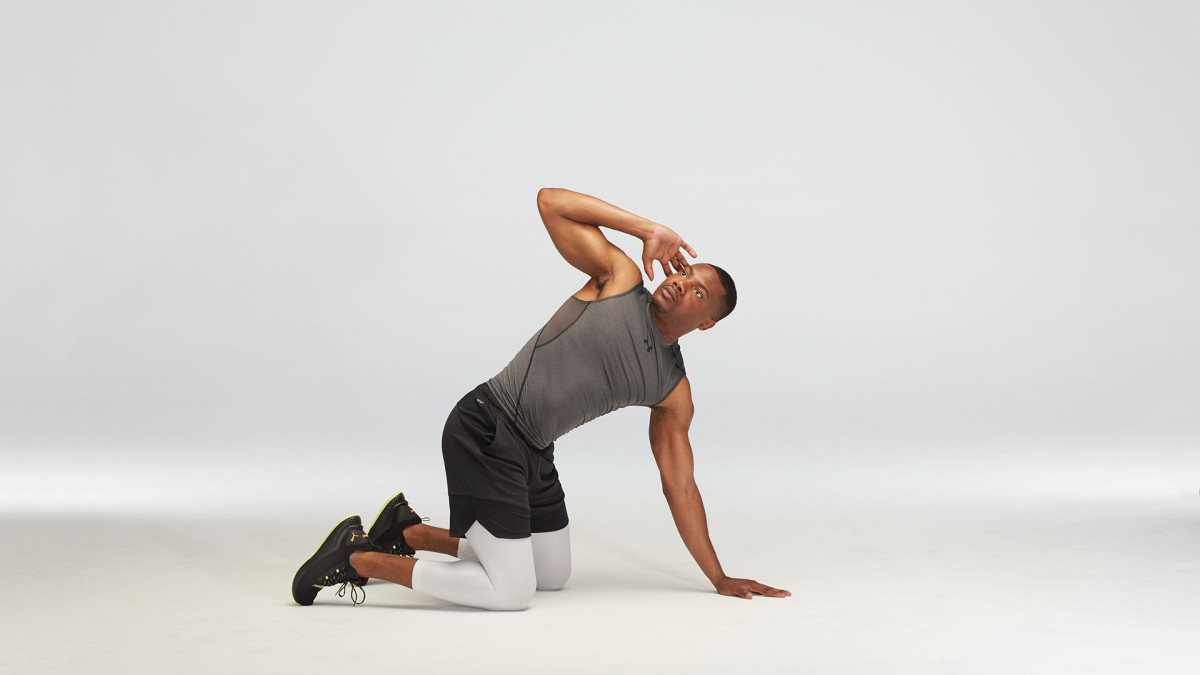Physical Address
304 North Cardinal St.
Dorchester Center, MA 02124
Physical Address
304 North Cardinal St.
Dorchester Center, MA 02124


If there’s one exercise that builds brute strength and power in your lower body, it’s the back squat. This compound move lights up your posterior chain—or the back of your body—building size and strength in your lower back, glutes, and hamstrings. Plus, it does wonders for your core.
But if you’re one of the millions of people stuck at a desk job, there’s a good chance your stiff back is affecting your leg day. The reason? A tight back can cause you to compensate with improper form, which may lead to increased strain on your lower back, reduced depth in your squat, and more.
That’s where mobility moves like the T-spine rotation come in. Thoracic spine rotations work to improve mobility and flexibility in the upper back, which can improve posture, reduce back pain, and enhance performance.
Want the latest fitness advice and workouts to tackle any adventure? Sign up for our Blueprint newsletter.
“Located in the mid and upper back, the thoracic spine provides stability and support for the upper body, allowing both spinal rotation and flexibility,” says Austin-based physical therapist and owner of OutWellness, Dr. Syd Young. “Rotation occurs most prominently in the upper thoracic spine (T2-7), and extension occurs in the lower thoracic spine (T7-12). Each segment has different mobility and strength requirements to engage and move effectively; and both are essential for overall core strength and performance.”
While your spine doesn’t exactly rotate while you’re squatting, if you have limited mobility in your thoracic spine, experts state it can cause your hips to overcompensate to counterbalance your forward leaning torso.
“Restricted thoracic mobility generates compensation elsewhere in the kinetic chain,” says Steven Dick, co-founder of The Fitness Group. “When your T-spine is unable to extend correctly during a squat, you’ll typically notice excess lumbar arching, forward head posture, or shoulder rounding – all of which subtract from power output and increase injury risk.”
Related: How to Make Jump Rope Twice as Effective for Fat Loss
If you want to up your squat game, Dick reveals three benefits of adding T-spine rotations to your weekly warmup.
More T-spine mobility allows for more comfortable bar positioning in back squats, creating a stable shelf on the traps without scrunching the shoulders or wrists.
Proper thoracic position enables more effective diaphragmatic breathing and 360-degree bracing of the core, which produces the intra-abdominal pressure needed for more demanding lifts.
A moving T-spine maintains the ideal vertical torso position in squats, which allows force to be efficiently transmitted from the legs, through the core, to the bar.
Related: This Range of Motion Hack Is the Secret to Unlocking a Bench Press PR